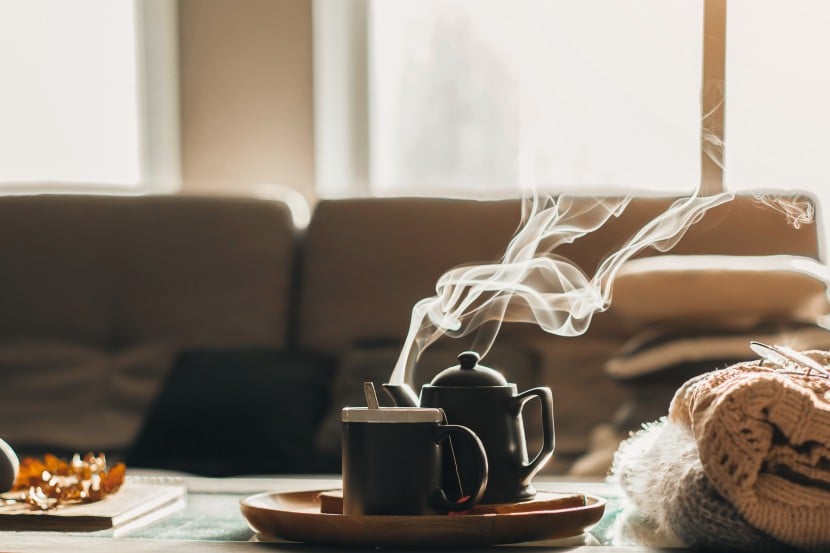We’re all looking for ways to save energy. This is even more important now as the typical energy bill could increase by £94 a year from 1 January.
These tips could help to preserve heat in your home so you might be able to reduce the amount of time you leave your heating on for. You might even be able to turn your thermostat down by a couple of degrees.
Remember, if you’re struggling with your energy bills, there is support available to you. You can speak to your supplier to work out a payment plan, or you could see if any energy grants apply to you.

Get rid of draughts
Draught excluders
If there’s a gap under your door, try covering it with a draught excluder. This stops any cold air creeping in.
You can make one yourself quite easily. Cut a leg off an old pair of jeans, stuff it, and sew up each end. You could even get creative and use different materials or designs if you like.
Draught excluder strips
You can check your windows or any other areas for draughts using a candle. Hold it up to your window frames and if it flickers you may have a draught.
You can fix these using draught excluder strips that you apply to the window frame. Make sure you follow the instructions on the pack before you use them though.
Use caulk to get rid of drafts
You can also fill in the gaps that cause drafts using a paste known as caulk. This hardens in the gaps and seals them. Again, check the manufacturer’s instructions before you start using it.
Shut your curtains in the colder parts of the day
Leaving your curtains open during the day when it’s sunny could keep a room warm without you having to turn on the heating.
When night falls, close your curtains and shut the blinds if you have them. They add an extra layer of insulation, which makes your central heating go a bit further.
Shut the doors to the rooms you aren't using
If you aren’t using a room, shut the door and turn off the radiators. Heat can escape into these rooms, which is a waste if no-one is using them.
Shut the doors to the rooms you’re using too. This should keep the heat in. You could even use your new draught excluder to stop any extra heat escaping.
Use excess heat from cooking
Any steam, frying or oven-cooking creates heat, making your space warmer. So wait until after you’ve cooked to see if you need to turn up the heat.
If you’ve used the oven, open it’s door when you’ve finished cooking. As it’s cooling down, you can use the excess heat to help warm up the house without turning the heating on.
Buy some rugs if you have tiles or floorboards
You could lose some heat through tiled floors or floorboards, but a rug can help to keep some of the extra heat in.
Rugs Direct recommends a shaggy rug or a heavyweight pile which has a better chance of trapping warm air. It might also be worth adding underlay or insulation, which can stop the rug slipping but also boost your rug’s heat-trapping properties.
If you don’t want to buy new, you could look for second-hand rugs on sites like gumtree or eBay.
Move your sofa away from the radiator
Move any furniture that’s in front of the radiator. The heat should be able to circulate more effectively.
If you can’t move the furniture, try a radiator reflector or fan.
Radiator fans sit on top of your radiator and start up when the radiator comes on. It helps the heat to circulate around the room.
Heat reflectors are another option. These sit behind the radiator where heat often gets lost. The reflector reflects heat into the room creating warmth.
Turn on the heating 30 minutes before you need it
Some people may think an effective way to heat the home is leaving the heating on low all day. Generally, this isn’t a great option for money saving.
The best way is to put on the heating as and when you need it.
Set a timer for 30 minutes before you want the heating on. This is how long it usually takes to heat up a home.
Set the timer to switch off 30 minutes before you want to turn off the heating. It still produces heat when it’s cooling down.
If you’re working from home, you should get to know the chilly times of day and when you need your heating. Usually this is first thing in the morning and the evening.
Turn down your thermostat by 1 or 2 degrees
The energy saving trust says turning the dial down on your heating by 1 or 2 degrees could reduce your energy bill by 10%.
And if you follow our other tips, you may not even notice the drop in temperature. If you want to know more, our energy efficiency guide can help.
Switching energy providers
If you're looking for certainty on your energy bills, compare energy deals to see fixed deals that are currently available.

